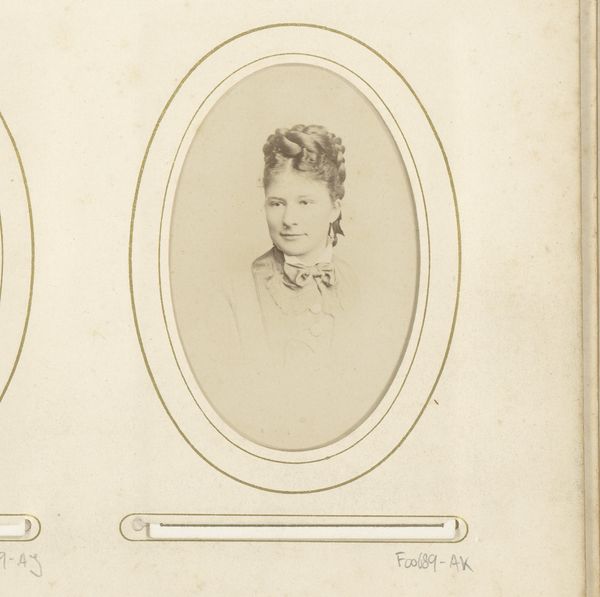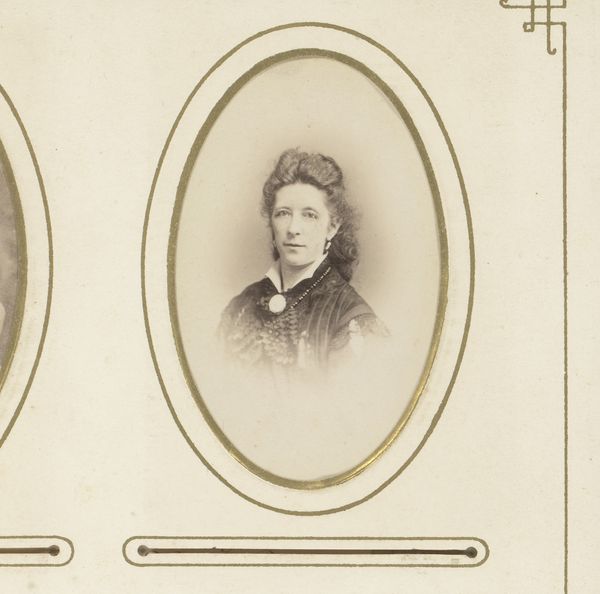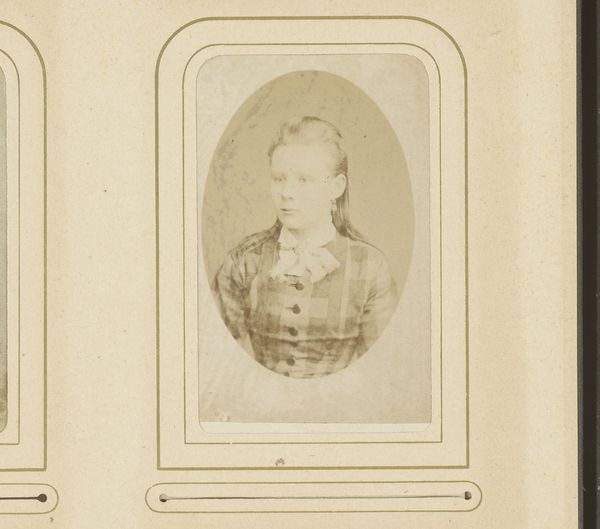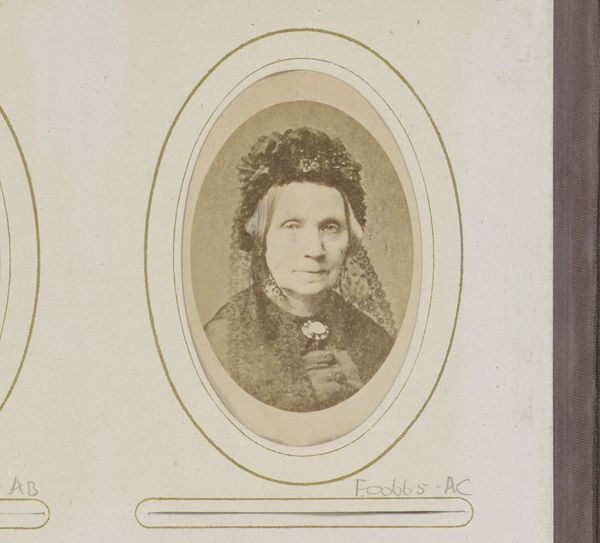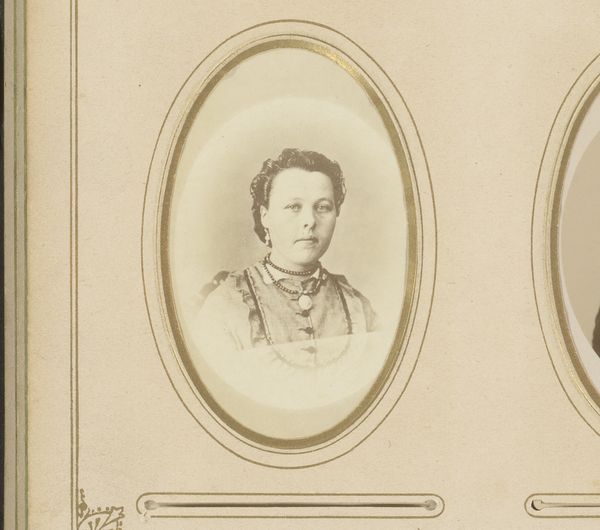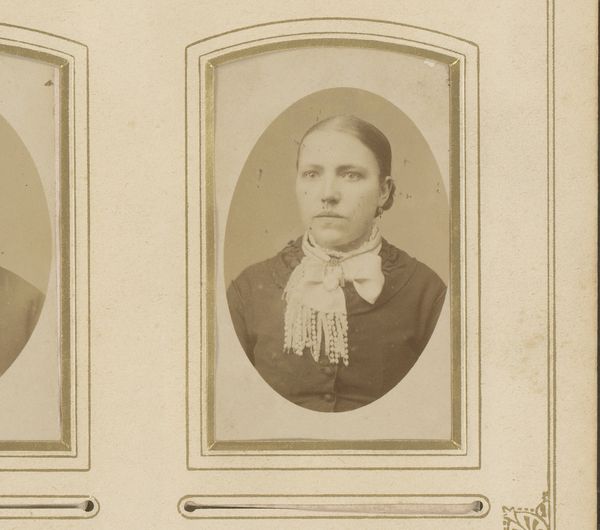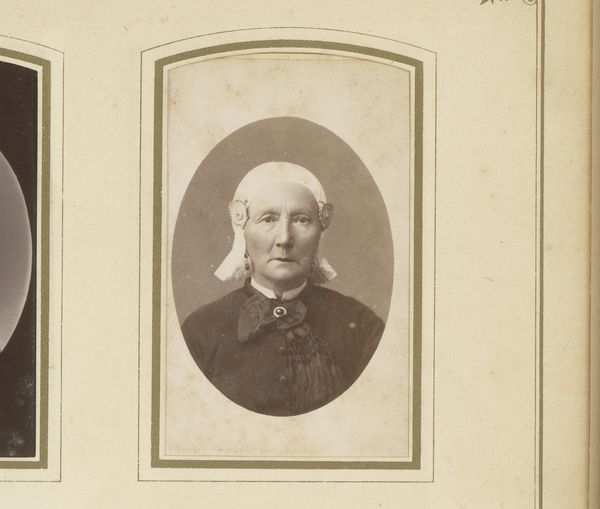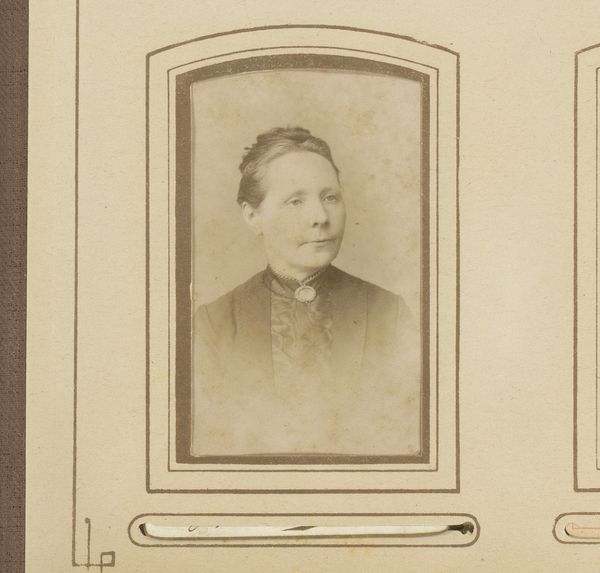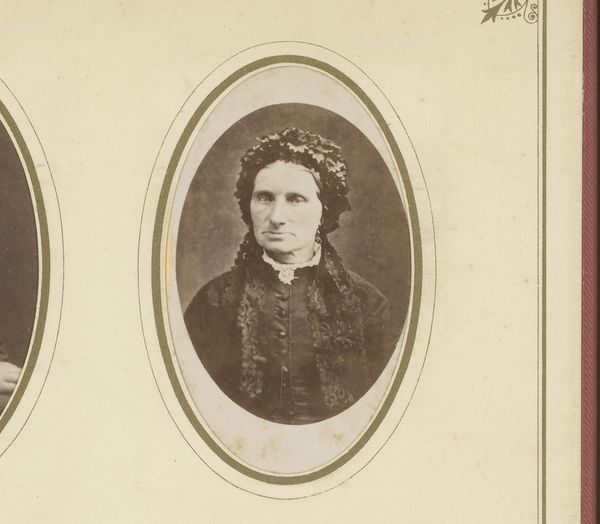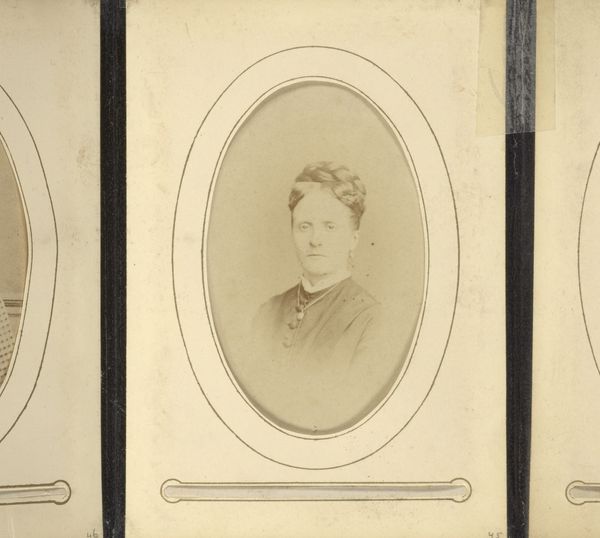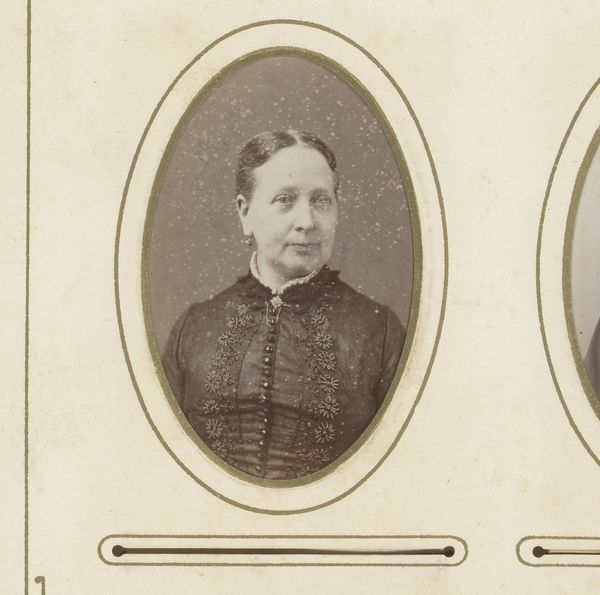
photography, albumen-print
#
portrait
#
photography
#
historical photography
#
19th century
#
albumen-print
Dimensions: height 83 mm, width 52 mm
Copyright: Rijks Museum: Open Domain
Editor: Here we have a rather quaint albumen print, a portrait of a woman by Carel Eduard Westerborg, dated sometime between 1861 and 1900. There's a certain serene quality to it, a sense of a bygone era captured in this oval frame. What strikes you most about this image? Curator: The albumen print, beyond its aesthetic appeal, offers us a compelling lens through which to view 19th-century societal values. The formality of the portrait, the woman's attire – all these elements speak volumes about the status and expected demeanor of women in that period. Do you think the composition, specifically the tight framing, adds to that sense of prescribed roles? Editor: Absolutely, there's a feeling of being constrained, almost like the image itself is a social construct. The meticulous detail in her clothing versus the soft focus on her face…it's a fascinating contrast. Do you think this highlights a particular aspect of female representation at the time? Curator: It certainly plays into the prevalent ideology of the time, where appearances were meticulously curated to project an image of respectability and social standing. The soft focus could be interpreted as an attempt to idealize the sitter, softening any perceived imperfections. Consider the context: photography was becoming increasingly accessible, and portraiture became a way for the burgeoning middle class to emulate the aristocracy. Do you think that democratic impulse changed anything? Editor: I can see how it democratized representation, making portraits available to a broader segment of society. Though I would also agree it enforced standards as people tried to look a particular way. The rise of photography also shaped our collective memory, in that we are remembering only the photographed individuals of the era. What a paradox, of making history available yet restricted to certain people and a very careful self presentation! Curator: Exactly! It is important to remember, art has never been fully autonomous; its power resides in its constant dialogue with the forces shaping the world. Editor: This was incredibly insightful; it’s helped me to see beyond the surface and consider the photograph's place in a wider historical and social framework.
Comments
No comments
Be the first to comment and join the conversation on the ultimate creative platform.
